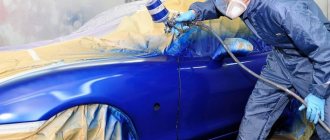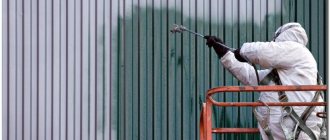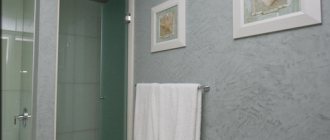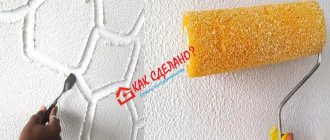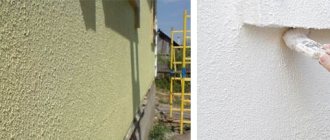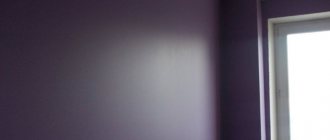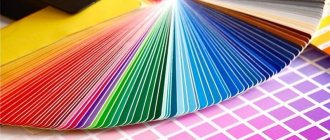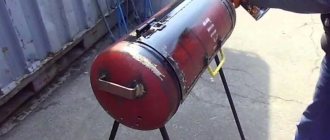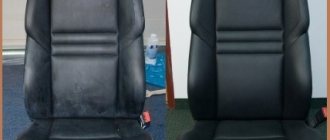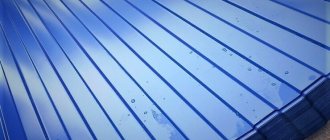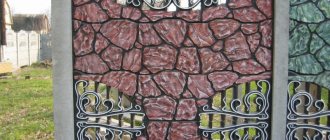Types of painting
Surfaces are painted in different ways - with a brush, roller, sponges, as well as with special painting devices.
Large ones are difficult to paint with a brush or sometimes even a roller.
- All that is required is an automated process, which uses time ten times more economically and significantly reduces paint consumption.
- Spray painting was first used by the American artist, writer and sculptor Francis Davis Millett in 1892.
Spray painting is possible using air and airless methods using special, rather expensive equipment.
Advantages of using the technique
The main advantage of the technique is the use of fewer solvents and the ability to create thick coatings. There is no air or foreign particles in the paint flow, making the coloring very uniform and of high quality. Painting using the airless method reduces the labor intensity of work and the consumption of coating materials, which is very important when processing large parts and objects.
Airless painting has the following advantages:
- acceleration of work and mechanization of the entire painting process;
- the result is an absolutely smooth coating;
- there is no need for effective ventilation due to the minimal use of solvents;
- increased productivity and the ability to create a thick paint layer;
- saving paint;
- increasing the environmental friendliness and safety of the work performed.
Features of air painting
For air painting, pneumatic or electric spray guns are used. The tank in them can be top or bottom located. Also, forced supply of paint and varnish material can be carried out using a pump. The consistency of the paint should be uniform, without lumps or foreign bodies.
- Otherwise, the nozzle with a small cross-section will become clogged.
- There are sprayers for thicker and thinner paints with different holes.
- The movement of the substance occurs under the influence of high pressure, which is created in the tank or in a container with a pump.
- Flowing out of the nozzle cross-section, the jet becomes rarefied and atomizes at lower air pressure.
Spraying occurs in two directions - in the center and to the sides along a small diameter. Air is supplied to the spray gun in two directions. The coating is smooth, thin, and beautiful.
But due to the not very high pressure created by the compressor or pump, the paint particles, not reaching the required surface, swirl in the air, creating a foggy haze, and fall to the floor. Therefore, paint consumption is greater than with airless painting, although the quality is higher.
What is the difference between an airless spray gun and an air spray gun?
Recently, a huge number of offers for the sale of various spray guns for painting products and objects have appeared on the painting equipment market. Managers of various companies vying with each other to advise using either an air spray gun or an airless one, and often different “experts” advise painting equipment that differs in operating principles for painting the same product with the same paint under the same conditions. How to choose the right spray gun for yourself? Let's start with a brief theory.
What is airless spraying?
Airless spray painting machine.
When applying paints and varnishes using the airless spraying method, crushing of the material occurs without the participation of compressed air. The term “airless spraying” is a relative one. It means the crushing of material due to the high hydraulic pressure exerted on it and displacement at high speed through the elliptical opening of a special nozzle. In this case, the potential energy of the paint and varnish material, when released into the atmosphere, turns into kinetic energy, turbulence occurs, leading to pulsation of the jet, the development of oscillations and deformation of the surface of the jet.
The deformation is enhanced by the hydrodynamic effect of the surrounding air and leads to the formation of an aerosol cloud, the size of the droplets of which varies over a wide range. Due to the resulting kinesthetic energy, drops of paint and varnish material move towards the surface to be painted and, overcoming air resistance, are slowed down and gently spread onto the surface. A very small part of the smallest drops lose speed and, before reaching the surface to be painted, fall out of the paint torch, settling on the floor and surrounding objects.
IMPORTANT: The size of the droplets of the sprayed material depends on the pressure, the geometric dimensions and shape of the nozzle, the flow rate of the material and its physical properties.
The airless spray method has a number of advantages and allows:
- Dramatically reduce losses of paint and varnish material due to fogging.
- Reduce solvent consumption due to the possibility of spraying more viscous paints and varnishes.
- Reduce ventilation power, because Mainly only solvent vapors need to be removed.
- Increase labor productivity (especially when painting large areas).
- In some cases, reduce the labor intensity of painting work due to the possibility of applying coatings of greater thickness.
- Significantly reduce gas pollution in the premises and improve sanitary and hygienic working conditions in the workshop, especially with insufficient exhaust ventilation.
IMPORTANT: Unlike the torch formed during the operation of a pneumatic (air) paint sprayer, with airless spraying the torch of the sprayed paint and varnish material is sharply defined and produces almost no paint mist.
Disadvantages of airless painting:
- Impossibility of painting products of complex design, because when choosing this spraying method, the paint will paint the structure unevenly, forming “sags” in convex areas.
- With airless spraying it is very difficult to obtain high quality of the painted product, because... paint, arriving under high pressure, can bounce off the surface, and “shagreen” can form on the product being painted.
- If the nozzle and pressure of the paint machine are incorrectly selected, smudges and paint sagging may occur, because... the painter may simply not be able to keep up with the speed of spraying paint material from the nozzle.
The main areas of application of an airless spray gun:
The main area of application of an airless spray gun is large-scale production of geometrically simple products or construction and repair of buildings and structures, for painting walls and ceilings.
The main consumers of airless spray guns are:
- Construction companies (for painting facades and interior decoration).
- Carriage factories (for the production of freight cars).
- Companies that apply fire retardant coatings that have a very high viscosity.
- Factories producing windows and doors (stream production of standard products). Basically, they apply primer without air, because... After its application, the technology is followed by grinding.
- Shipbuilders (painting of barges and large cargo ships).
What is the difference between air (pneumatic) spraying?
Advantages and disadvantages of the pneumatic spray (air) method:
Pneumatic spray gun.
Invented at the end of the 19th century, pneumatic spraying, i.e. spraying with compressed air remains the most popular method today. This method has proven itself especially well when applying quick-drying paints and varnishes: nitrocellulose, polyvinyl chloride, polyacrylate, etc.
Its advantages include, first of all, the possibility of finishing products of any shape using the widest range of materials, simplicity of design and ease of operation of the equipment. The method is especially cost-effective where the workpieces to be painted are frequently changed, where it is necessary to paint highly separated surfaces or small parts. The good quality of the resulting coatings and the ability to organize both high- and low-productivity finishing work are also of great importance.
However, this method also has serious drawbacks. For example, it is characterized by large losses of paint and varnish materials due to fogging, which leads to a deterioration in the sanitary condition in the workshop. The fire hazard of work is also very significant due to the presence of high concentrations of organic solvent vapors in the air.
Depending on the complexity of the product shape and equipment design, the loss of paint and varnish materials when using this method is 25-50%. They are due to the fact that the material at the exit of the nozzle is crushed by compressed air flowing at high speed from the air holes. As a result, a paint torch is formed from aerosol particles 5-100 microns in size, moving towards the product.
In a physical sense, an aerosol jet (spray torch) is a turbulent flow, the speed of which quickly decreases as it approaches the surface to be painted. In this case, some particles, before reaching the product, are carried away by the air flow, forming a paint mist. In addition, when the jet collides with the surface, turbulence is formed as a result of the repulsion of particles of the paint and varnish material. It is also possible for material to be carried away by an intensely evaporating spray. Finally, approaching the edges of the product, the spray jet inevitably flies past the surface to be finished. Thus, the entire set of particles not deposited on the product forms a paint mist and determines the amount of material loss during application. Therefore, important factors for improving the environmental situation and increasing the economic efficiency of production are reducing material losses due to fogging and increasing the coefficient of its transfer to the product.
The sprayed material is supplied to the spray gun in different ways: by gravity - from the upper or lower tank of the device itself, under pressure - from a paint injection tank installed at the workplace or from a centralized paint supply system.
The main areas of application of the air spray gun:
The main area of application of air spray guns is small-scale production, where frequent changes of material are required or possible, where high quality of the painted surface is required.
The main consumers of air spray guns are:
- Car services (they take equipment for painting cars).
- Furniture factories (frequent changes of material and the required high quality of the painted surface force furniture production to use air spray guns).
- Window and door production (for applying finishing coatings, air spray guns are also used due to the frequent change of paint colors).
- Automotive factories (for painting small products).
- Carriage factories (for final touch-up of passenger cars).
- Bus factories (passenger buses must have good finishing paint, and since most factories do not have such a flow of production, not so many paints of the same color are poured in a row per day).
Choose wisely high-pressure painting equipment, and it will serve you for many years!
COLOR 01.11.2018 Articles airless spraying, air spraying, spray gun, painting tools, painting, spraying, sprayer, professional advice
Application areas of air painting
The air painting method is used where it is necessary to create a thin, in most cases glossy, beautiful surface:
- In the manufacture of furniture,
- Wooden windows,
- Doors;
- For painting cars,
- Buses,
- Passenger carriages.
Solving possible problems
An important element of successful painting and long-term use of equipment is the timely identification and elimination of faults. Thus, when performing labor-intensive operations, the nozzle often becomes clogged. It needs to be cleaned by turning it 180 degrees and blowing out the dye.
See also Features and types of paints for road markings, brand ratings and application
A clogged torch often results in the device simply not spraying dye even at the highest pressure. In this case, you need to point the rotated nozzle at a piece of cardboard and pull the trigger. If at least a little material comes out, painting is allowed to continue.
Professional and high-quality painting is impossible if the filter is clogged or the valve on the pistons that push the paint materials stops. Thorough washing and preservation of the device helps to get rid of such problems for a long time.
More rare difficulties that prevent uniform and perfect painting include material supply failures. This problem occurs when using nozzles whose dimensions do not meet production specifications and dye consistency.
Airless painting principle
For painting large flat industrial surfaces, the airless method is best suited. Using special equipment (for example, Graco, Wagner), the paint is supplied under high pressure (about 530 bar, 1 bar - 0.987 atm.) into a kind of spray gun and sprayed with a fan.
- Moving at high speed, all the dust particles of paint purposefully reach the surface to be painted.
- There is no fog, which ensures much less paint and varnish material consumption.
Airless spray guns can spray thicker paint, which saves solvent and time, since there is no need to apply multiple layers of paint.
Airless paint spraying - what is it?
Airless paint application is a method in which paint is dispersed (that is, broken into tiny particles) due to a sudden change in pressure. Aerosol cans work in a similar way.
Read also: Why our eyes don’t freeze
For airless application, devices commonly called spray guns are used. Airless spray guns are a massive structure that contains:
- reservoir for paint and varnish material (not present on all models; some are connected directly to the paint can);
- pump pumping paint up to 250–500 atm;
- high pressure hose (sometimes not one, but 2-3, so that you can work as a team);
- spray nozzle. Typically, an airless spray gun comes with several different attachments, each of which allows you to achieve a particular line thickness.
Airless spraying is used when it is necessary to quickly and evenly paint a large surface. It is also widely used in industrial painting of parts (wooden elements, metal fittings, etc.).
Where is airless painting used?
The airless painting method is used mainly in construction for repair and finishing work. This method is universal for applying paint to the interior and exterior of houses, roofs, fences, garages, warehouse metal structures, large tanks for liquids, and freight cars.
- This is a very effective way of painting cargo ships, barges in shipbuilding.
- When producing windows and doors, a primer is applied in this way.
- Airless spray guns are of great importance in the work of organizations ensuring fire safety.
- Fire retardant coatings are characterized by a fairly thick consistency.
- Airborne sprayers cannot be used to apply them.
. The high pressure of airless spray guns is the best way to apply flame retardant, viscous substances.
Benefits and Features
Many surfaces in domestic or industrial conditions can be painted manually. However, the result will most likely leave much to be desired. Airless painting has the following advantages over manual application of the composition:
- very high labor productivity, automatic equipment allows you to increase the speed of work several times;
- making a high-quality layer on the surface of the part and eliminating the heterogeneity of the substance on the surface;
- the ability to paint surfaces in hard-to-reach places thanks to spraying the composition to the smallest splashes;
- the absence of streaks and stains is achieved due to the fact that the tool does not come into contact with the surface.
If you choose the wrong tip for the device or set the wrong spray speed, there may be a risk of leaks and sagging. They can also appear when painting parts of complex shapes. With careful adjustments this will be completely unnoticeable.
When choosing a device, it is important to pay attention to the tightness of seals, channels and cavities. This will avoid leaks. The connection point between the device and the hose must be equipped with a rotating mechanism for ease of operation. It would be useful to have a blocking shut-off valve and an additional fine filter.
Advantages of airless painting
The airless painting method allows you to reduce the time required to complete the job by tens of times.
- When painting large surfaces, effort is saved many times over. Getting the job done becomes much easier with an airless spray gun.
- Material savings are ensured: solvent - an airless painting apparatus works with liquids of different consistencies, so there is no need to constantly ensure that the paint is liquid by adding solvent. With a thicker paint coating, an even layer is formed, for which it is not necessary to apply several layers.
- When using an airless spray gun with high pressure, all drops of paint adhere to the surface being painted without being released into the atmosphere. There is much less pollution of all kinds. No mist is formed from parts of the paint. It is easier to work without inhaling spray particles.
- High spray speed prevents air and foreign particles from entering the paint.
An electric paint sprayer does not require a compressor to operate.
Precautions during operation
When performing airless painting, it is important to follow a number of safety rules. It is worth considering the following:
- Always use airless spray device fuses.
- Gradually release pressure at the final stages of work until cleaning and replacing the torches.
- It is strictly forbidden to point equipment connected to the network towards a person.
- During work, be sure to wear safety glasses and a respirator.
- Carry out painting in conditions of high-quality ventilation.
When spraying substances that are easily flammable, equipment and metal containers must be grounded. It is important to adhere to safety rules to prevent the formation of sparks.
Difficulties and disadvantages of airless painting
The result of painting is not always aesthetically pleasing: excessive layers of paint are possible and it can slide off. Thickened layers are formed and fine-grained elements appear.
It is necessary to select the right nozzles with holes for a coating of a certain consistency so that it does not flow or form clumps.
- Equipment for airless painting is expensive. If it is necessary to use it, you must contact specialized organizations that professionally use such technical means of coloring.
- Difficult maintenance of airless painting equipment.
- Solvent consumption during complex and time-consuming washing of equipment after work is completed.
Preliminary atomization is used using special devices to obtain powder particles.
Before painting large surfaces, you need to think about what the result should be, make the right choice between air and airless painting, and select the appropriate equipment. Only in this case the work will be completed quickly and efficiently.
Necessary equipment
In an airless spray gun there is no air in the output stream. And this is where its main difference from its pneumatic counterpart lies. Otherwise the equipment is very similar.
For maximum convenience, it is recommended to mount the sprayer on a portable stand. The equipment includes the following elements:
- body with handle;
- dye supply fitting;
- elliptical nozzle;
- special hoses;
- compressor.
Airless spraying is recommended to be carried out with high-quality and reliable equipment. The sealing elements must be airtight. The device must have a safety shutter. The handle is coated with a special coating with an anti-slip effect.
Budget sprayers have a plastic body. The durability of such devices is considered very doubtful, since plastic can hardly be called highly durable. In addition, it is not particularly resistant to chemicals.
The best solution is the use of metal structures. If you need to constantly move while working, it is better to give preference to a compact device.
See also
Top 10 brands of heat-resistant paints and rating of the best heat-resistant compositions
Photo of airless painting
Diagnosis and problem solving
Detecting and eliminating faults in a timely manner is an important step towards successful painting during long-term operation of the equipment.
Firstly, quite often when performing labor-intensive processes, the nozzle becomes clogged. It is cleaned by rotating 180 degrees and blowing paint. A clogged torch often results in the device simply not spraying paint even at the highest pressure. The rotated nozzle is aimed at a piece of cardboard, and the trigger is pulled. If even a small amount of material has come out, coloring can continue.
What else can interfere with airless spraying?
It is impossible to produce professional high-quality painting if the filter is clogged or the valve on the pistons pushing the paint materials is stopped. Thorough washing and preservation of painters’ working equipment helps to get rid of such problems for a long time.
More rare troubles that prevent you from painting perfectly and evenly include a failure to supply the material. This malfunction is caused by the use of nozzles whose dimensions do not correspond to certain production parameters and paint consistency. Like all construction and installation tasks, airless painting requires, albeit a little, experience.
Preparing equipment for work
The drainage tube must be placed in a container with dirty paint material, and the suction hose must be placed in a container with clean paint material. By turning the regulator, the airless painting equipment is put into operation. When the paint begins to flow through the drainage hose, it should be dipped in a bucket to prevent air bubbles from appearing in the system. To squeeze out the gases completely, the drains should be connected to the hose with a specialized clip, then the tubes should be placed in a container with the material. The pump must pump the liquid for half a minute to completely remove the air.
Don’t rush to paint surfaces as soon as you buy airless spray equipment! Before starting the main processes, beginners need to learn a number of nuances that contribute to the successful completion of technological operations.
- Many spray tools have removable filters near the pump attachment and pistol handle. Do not start painting without making sure that the filter bags are clean.
- If the paint passes through mesh filter units, it will not contain mechanical impurities that negatively affect the quality of painting.
- Filling with coloring material is carried out in one step to reduce the amount of air entering the working environment.
- High pressure hoses are used for efficient paint collection.
In order to successfully drive the paint through the working unit, the nozzle must be removed from the gun in advance over a bucket with the used material. This way, excessive paint splashing can be prevented under high pressure conditions.
Advantages of the modern method
Airless painting equipment allows you to distribute a thicker layer of paintwork materials when adding thinners in smaller quantities. There are no additional elements or air in the applied mixture, so the composition is applied to the ceiling or walls more evenly. Material consumption is reduced and the time required to paint the surface is reduced. The following advantages of the process are also noted:
- The coating will be absolutely smooth and beautiful;
- There is no need to create increased ventilation in the room, because thinners are not used in large quantities;
- Work becomes safer and more environmentally friendly.
For such coloring, the paint must have a certain viscosity; there should not be large particles in the composition.
You should not use the device for painting small areas; it does not have a function for adjusting the paint distribution distance.
There is no need to create increased ventilation in the room, because thinners are not used in large quantities.
Preparation stages
Before painting, the spray gun must be properly adjusted and its performance tested on a cardboard or paper sheet. If even streaks are observed on the surface, you can continue painting. In case of uneven application, it is better to use a working mixture with a higher viscosity. You can also try reducing the intensity of the ink flow.
Preparation for work involves the following steps:
- The coloring composition is filtered using a fine-grained mesh. It is then cleaned with a filter.
- The supply hose is placed in a container with paint, and the drain wire is placed in a container with bad paint. Only after this can you turn on the airless device.
- After the paint flows through the drainage, the tube is dipped into a bucket. Then you need to connect the suction and drainage hoses using a clip and lower them into a container with the working paint mixture. After half a minute of compressor operation, the equipment is turned off.
- Painting facades, walls and metal structures must begin with filling all hoses. Dismantle the nozzle, adjust the mode and wait until the composition begins to flow evenly. Then the gun must be placed on the safety lock and the pressure in the device must be released.
- The viscosity of the composition depends on the processing tasks.
- They start the unit, adjust the pressure and begin painting.
There are two types of airless spray guns: a gun with a built-in reservoir and a device that is connected to the reservoir with hoses. The first device is intended for use in everyday life, the second - for industrial conditions.
Airless painting is a very advantageous replacement for conventional pneumatic paint sprayers. This technology allows you to paint poles, residential, office and industrial premises, obtaining a uniform and high-quality paint coating.
